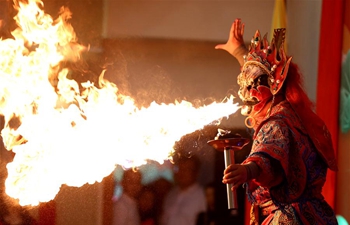CANBERRA, Feb. 14 (Xinhua) -- Tooth decay is the most prevalent oral disease among Australian children, the National Child Oral Health Study has revealed.
The study, published by the University of Adelaide on Wednesday, found that 40 percent of Australian children aged between five and 10 years of age had symptoms of dental caries, otherwise known as decay, in their baby teeth.
Researchers from the University of Adelaide studied the oral health of 24,664 children aged between five and 14 from 2012 to 2014 for the report.
"Just over 40 percent of children aged 5-10 years had experienced caries in their primary teeth," lead authors Loc Do and John Spencer wrote.
"On average, children had 1.5 primary teeth with caries experience. However, over one quarter of children aged 5-10 years had untreated caries in their primary dentition."
They found that the majority of decay in both primary and permanent teeth occurred in children aged from five to 10 and 11 to 14 with a small portion of those groups accounting for more than 80 percent of tooth decay.
It was also established that a child's upbringing greatly influenced their oral health.
"Caries experience and its components were consistently higher among children from households where parents had less education and low income," the report said.
"There were also variations by indigenous identity and residential location."
The cost of treating dental decay was estimated to be 3.9 billion U.S. dollars annually.
Experts have said they believe sugar is responsible for the prevalence of tooth decay in children.
"I think dietary factors are hugely important ... there's a lot more hidden sugars in foods and drinks that we consume," Sophie Beaumont from Melbourne's Royal Dental Hospital said.

















